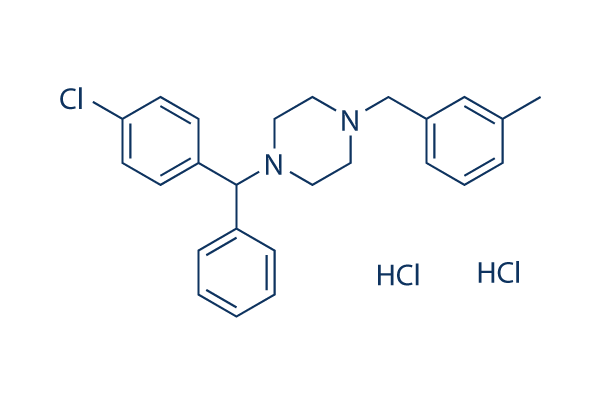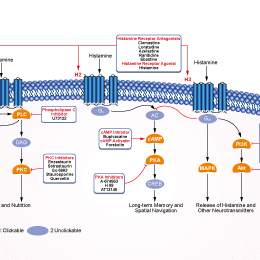
- Bioactive Compounds
- By Signaling Pathways
- PI3K/Akt/mTOR
- Epigenetics
- Methylation
- Immunology & Inflammation
- Protein Tyrosine Kinase
- Angiogenesis
- Apoptosis
- Autophagy
- ER stress & UPR
- JAK/STAT
- MAPK
- Cytoskeletal Signaling
- Cell Cycle
- TGF-beta/Smad
- DNA Damage/DNA Repair
- Compound Libraries
- Popular Compound Libraries
- Customize Library
- Clinical and FDA-approved Related
- Bioactive Compound Libraries
- Inhibitor Related
- Natural Product Related
- Metabolism Related
- Cell Death Related
- By Signaling Pathway
- By Disease
- Anti-infection and Antiviral Related
- Neuronal and Immunology Related
- Fragment and Covalent Related
- FDA-approved Drug Library
- FDA-approved & Passed Phase I Drug Library
- Preclinical/Clinical Compound Library
- Bioactive Compound Library-I
- Bioactive Compound Library-Ⅱ
- Kinase Inhibitor Library
- Express-Pick Library
- Natural Product Library
- Human Endogenous Metabolite Compound Library
- Alkaloid Compound LibraryNew
- Angiogenesis Related compound Library
- Anti-Aging Compound Library
- Anti-alzheimer Disease Compound Library
- Antibiotics compound Library
- Anti-cancer Compound Library
- Anti-cancer Compound Library-Ⅱ
- Anti-cancer Metabolism Compound Library
- Anti-Cardiovascular Disease Compound Library
- Anti-diabetic Compound Library
- Anti-infection Compound Library
- Antioxidant Compound Library
- Anti-parasitic Compound Library
- Antiviral Compound Library
- Apoptosis Compound Library
- Autophagy Compound Library
- Calcium Channel Blocker LibraryNew
- Cambridge Cancer Compound Library
- Carbohydrate Metabolism Compound LibraryNew
- Cell Cycle compound library
- CNS-Penetrant Compound Library
- Covalent Inhibitor Library
- Cytokine Inhibitor LibraryNew
- Cytoskeletal Signaling Pathway Compound Library
- DNA Damage/DNA Repair compound Library
- Drug-like Compound Library
- Endoplasmic Reticulum Stress Compound Library
- Epigenetics Compound Library
- Exosome Secretion Related Compound LibraryNew
- FDA-approved Anticancer Drug LibraryNew
- Ferroptosis Compound Library
- Flavonoid Compound Library
- Fragment Library
- Glutamine Metabolism Compound Library
- Glycolysis Compound Library
- GPCR Compound Library
- Gut Microbial Metabolite Library
- HIF-1 Signaling Pathway Compound Library
- Highly Selective Inhibitor Library
- Histone modification compound library
- HTS Library for Drug Discovery
- Human Hormone Related Compound LibraryNew
- Human Transcription Factor Compound LibraryNew
- Immunology/Inflammation Compound Library
- Inhibitor Library
- Ion Channel Ligand Library
- JAK/STAT compound library
- Lipid Metabolism Compound LibraryNew
- Macrocyclic Compound Library
- MAPK Inhibitor Library
- Medicine Food Homology Compound Library
- Metabolism Compound Library
- Methylation Compound Library
- Mouse Metabolite Compound LibraryNew
- Natural Organic Compound Library
- Neuronal Signaling Compound Library
- NF-κB Signaling Compound Library
- Nucleoside Analogue Library
- Obesity Compound Library
- Oxidative Stress Compound LibraryNew
- Plant Extract Library
- Phenotypic Screening Library
- PI3K/Akt Inhibitor Library
- Protease Inhibitor Library
- Protein-protein Interaction Inhibitor Library
- Pyroptosis Compound Library
- Small Molecule Immuno-Oncology Compound Library
- Mitochondria-Targeted Compound LibraryNew
- Stem Cell Differentiation Compound LibraryNew
- Stem Cell Signaling Compound Library
- Natural Phenol Compound LibraryNew
- Natural Terpenoid Compound LibraryNew
- TGF-beta/Smad compound library
- Traditional Chinese Medicine Library
- Tyrosine Kinase Inhibitor Library
- Ubiquitination Compound Library
-
Cherry Picking
You can personalize your library with chemicals from within Selleck's inventory. Build the right library for your research endeavors by choosing from compounds in all of our available libraries.
Please contact us at [email protected] to customize your library.
You could select:
- Antibodies
- Bioreagents
- qPCR
- 2x SYBR Green qPCR Master Mix
- 2x SYBR Green qPCR Master Mix(Low ROX)
- 2x SYBR Green qPCR Master Mix(High ROX)
- Protein Assay
- Protein A/G Magnetic Beads for IP
- Anti-Flag magnetic beads
- Anti-Flag Affinity Gel
- Anti-Myc magnetic beads
- Anti-HA magnetic beads
- Magnetic Separator
- Poly DYKDDDDK Tag Peptide lyophilized powder
- Protease Inhibitor Cocktail
- Protease Inhibitor Cocktail (EDTA-Free, 100X in DMSO)
- Phosphatase Inhibitor Cocktail (2 Tubes, 100X)
- Cell Biology
- Cell Counting Kit-8 (CCK-8)
- Animal Experiment
- Mouse Direct PCR Kit (For Genotyping)
- New Products
- Contact Us
Meclizine 2HCl
Synonyms: NSC 28728,Meclozine dihydrochloride
Meclizine (NSC 28728,Meclozine dihydrochloride) is a histamine H1 receptor antagonist used to treat nausea and motion sickness, has anti-histamine, anti-muscarinic and anti-oxidative phosphorylation properties, also an agonist ligand for mCAR (constitutive androstane receptor) and an inverse agonist for hCAR.

Meclizine 2HCl Chemical Structure
CAS No. 1104-22-9
Purity & Quality Control
Batch:
Purity:
99.98%
99.98
Meclizine 2HCl Related Products
| Related Targets | H1 receptor H2 receptor H3 receptor H4 receptor | Click to Expand |
|---|---|---|
| Related Products | GSK2879552 2HCl JNJ-7777120 Mianserin HCl Ebastine Ciproxifan Maleate | Click to Expand |
| Related Compound Libraries | FDA-approved Drug Library Natural Product Library Neuronal Signaling Compound Library CNS-Penetrant Compound Library Anti-alzheimer Disease Compound Library | Click to Expand |
Signaling Pathway
Biological Activity
| Description | Meclizine (NSC 28728,Meclozine dihydrochloride) is a histamine H1 receptor antagonist used to treat nausea and motion sickness, has anti-histamine, anti-muscarinic and anti-oxidative phosphorylation properties, also an agonist ligand for mCAR (constitutive androstane receptor) and an inverse agonist for hCAR. | |
|---|---|---|
| Targets |
|
| In vitro | ||||
| In vitro | Meclizine is a histamine H1 receptor antagonist used to treat nausea and motion sickness, possesses anticholinergic, central nervous system depressant, and local anesthetic effects. [1] Meclizine is an agonist ligand for mouse CAR (constitutive androstane receptor), and an inverse agonist for human CAR. Meclizine increases mCAR transactivation in a dose-dependent manner, stimulates binding of steroid receptor coactivator 1 to the murine receptor in vitro. In contrast, meclizine suppresses hCAR transactivation and inhibits the phenobarbital-induced expression of the CAR target genes, cytochrome p450 monooxygenase (CYP)2B10, CYP3A11, and CYP1A2, in primary hepatocytes derived from mice expressing hCAR, but not mCAR. [2] |
|||
|---|---|---|---|---|
| Cell Research | Cell lines | HepG2 cells | ||
| Concentrations | ~10 μM | |||
| Incubation Time | 24 h | |||
| Method | HepG2 cells are cultured in 24-well dishes with DMEM supplemented with 10% charcoal-stripped calf serum. Cells are transfected using calcium phosphate with 100 ng of receptor expression vectors, 300 ng of luciferase reporter plasmids, and 100 ng of pSV2-β-galactosidase as internal control of transfection efficiency. Drugs are added 12 h after transfection, and cells are incubated for an additional 24 h. The cell lysate is assayed for luciferase activity and normalized to β-galactosidase activity. |
|||
| In Vivo | ||
| In vivo | Meclizine administration to mice increases expression of CAR target genes in a CAR-dependent manner. [2] Meclizine silence oxidative metabolism, suppresses apoptotic cell death in a murine cellular model of polyglutamine (polyQ) toxicity. [3] |
|
|---|---|---|
| Animal Research | Animal Models | Mouse |
| Dosages | 100 mg/kg | |
| Administration | i.p. | |
| NCT Number | Recruitment | Conditions | Sponsor/Collaborators | Start Date | Phases |
|---|---|---|---|---|---|
| NCT04482985 | Unknown status | Seasickness|Meclizine |
Medical Corps Israel Defense Force |
September 1 2020 | Phase 4 |
| NCT04564144 | Unknown status | Emesis |
Mansoura University |
June 1 2020 | Phase 1|Phase 2 |
Chemical Information & Solubility
| Molecular Weight | 463.87 | Formula | C25H27Cl2N2.2HCl |
| CAS No. | 1104-22-9 | SDF | Download Meclizine 2HCl SDF |
| Smiles | CC1=CC(=CC=C1)CN2CCN(CC2)C(C3=CC=CC=C3)C4=CC=C(C=C4)Cl.Cl.Cl | ||
| Storage (From the date of receipt) | |||
|
In vitro |
Ethanol : 2 mg/mL DMSO : 1 mg/mL ( (2.15 mM) Moisture-absorbing DMSO reduces solubility. Please use fresh DMSO.) Water : Insoluble |
Molecular Weight Calculator |
|
In vivo Add solvents to the product individually and in order. |
In vivo Formulation Calculator |
||||
Preparing Stock Solutions
Molarity Calculator
In vivo Formulation Calculator (Clear solution)
Step 1: Enter information below (Recommended: An additional animal making an allowance for loss during the experiment)
mg/kg
g
μL
Step 2: Enter the in vivo formulation (This is only the calculator, not formulation. Please contact us first if there is no in vivo formulation at the solubility Section.)
% DMSO
%
% Tween 80
% ddH2O
%DMSO
%
Calculation results:
Working concentration: mg/ml;
Method for preparing DMSO master liquid: mg drug pre-dissolved in μL DMSO ( Master liquid concentration mg/mL, Please contact us first if the concentration exceeds the DMSO solubility of the batch of drug. )
Method for preparing in vivo formulation: Take μL DMSO master liquid, next addμL PEG300, mix and clarify, next addμL Tween 80, mix and clarify, next add μL ddH2O, mix and clarify.
Method for preparing in vivo formulation: Take μL DMSO master liquid, next add μL Corn oil, mix and clarify.
Note: 1. Please make sure the liquid is clear before adding the next solvent.
2. Be sure to add the solvent(s) in order. You must ensure that the solution obtained, in the previous addition, is a clear solution before proceeding to add the next solvent. Physical methods such
as vortex, ultrasound or hot water bath can be used to aid dissolving.
Tech Support
Answers to questions you may have can be found in the inhibitor handling instructions. Topics include how to prepare stock solutions, how to store inhibitors, and issues that need special attention for cell-based assays and animal experiments.
Tel: +1-832-582-8158 Ext:3
If you have any other enquiries, please leave a message.
* Indicates a Required Field
Tags: buy Meclizine 2HCl | Meclizine 2HCl ic50 | Meclizine 2HCl price | Meclizine 2HCl cost | Meclizine 2HCl solubility dmso | Meclizine 2HCl purchase | Meclizine 2HCl manufacturer | Meclizine 2HCl research buy | Meclizine 2HCl order | Meclizine 2HCl mouse | Meclizine 2HCl chemical structure | Meclizine 2HCl mw | Meclizine 2HCl molecular weight | Meclizine 2HCl datasheet | Meclizine 2HCl supplier | Meclizine 2HCl in vitro | Meclizine 2HCl cell line | Meclizine 2HCl concentration | Meclizine 2HCl nmr







































